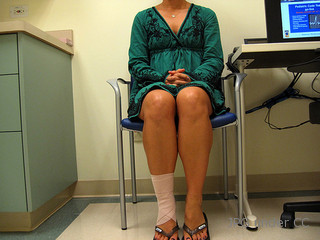Major Leg & Foot Blood Clot Symptoms (DVT)
Every year millions of people suffer from the devastating effects of blood clot symptoms within their lower extremities, particularly their legs and feet. It also known medically as deep vein thrombosis, is a serious condition when left untreated. Last year, it claimed over 650,000 lives while hospitalizing close to 600,000 people.
Despite the severity of this devastating condition, by identifying blood clot causes, seeking the attention of a medical professional, and treating this condition immediately, deep vein thrombosis can be treated.
This article aims to discuss the causes of blood clot signs and provide practical solutions to respond to symptoms of this condition.
Symptoms of blood clots appear when a clot disrupts the circulation of blood within the major deep veins of the lower legs, pelvis region, and thighs; veins within these lower extremities circulate blood from the lower body back to the heart.
Various factors tend to lead to the development of a clot within a vein or blood vessel.
Such factors are:
Severe damage to the inside of a broken blood vessel in leg due to traumatic conditions.
Variations in typical blood flow, including minimal or total restriction of blood flow.
Hypercoagulability, by which the blood has a natural tendency to clot.
Any one of these conditions or a combination of the three can easily lead to symptoms of a blood clot in legs or feet. Deep vein thrombosis is a devastating condition, however, when detected, can aid in early treatment.
Blood clots symptoms in leg
Blood clot symptoms transpire in affected lower extremities, such as the legs and feet, when this condition restricts the flow of blood within the vein, resulting in inflammation and swelling.
Typical symptoms of deep vein thrombosis include:
- Discoloration of the skin.
- Increased leg pain when extending the foot.
- Unusually warm lower extremities.
- Cramping experienced within the legs.
- Redness.
- Swelling.
- Gradual and increased pain in leg.
Despite the obvious symptoms of deep vein thrombosis, a majority of individuals who experience this devastating condition report little to no signs of blood clots.
Deep vein thrombosis is a serious condition, and when at all possible, treatment, preferably through a medical professional should be considered immediately!
Consulting A Medical Professional
If you have a blood clot, consult a medical professional immediately! This condition brought about as a result of deep vein thrombosis can dissipate on its own; however, if left untreated the consequences of a blood clot reaching the lung cavities could be fatal!
While seeking the counsel of a medical professional is important, a common treatment, often recommended by medical professionals, is the use of anticoagulants.
Although blood clots vary depending on where they are located within the body, anti-coagulation or blood thinning medicines easily prevent clotting of blood within the veins, which offsets the possibility of clots traveling from the lower extremities to the lungs.
Regardless of the method of treatment pursued, immediate action is necessary. Blood clot symptoms, if left unattended, could result in a fatality.


Leave a Reply